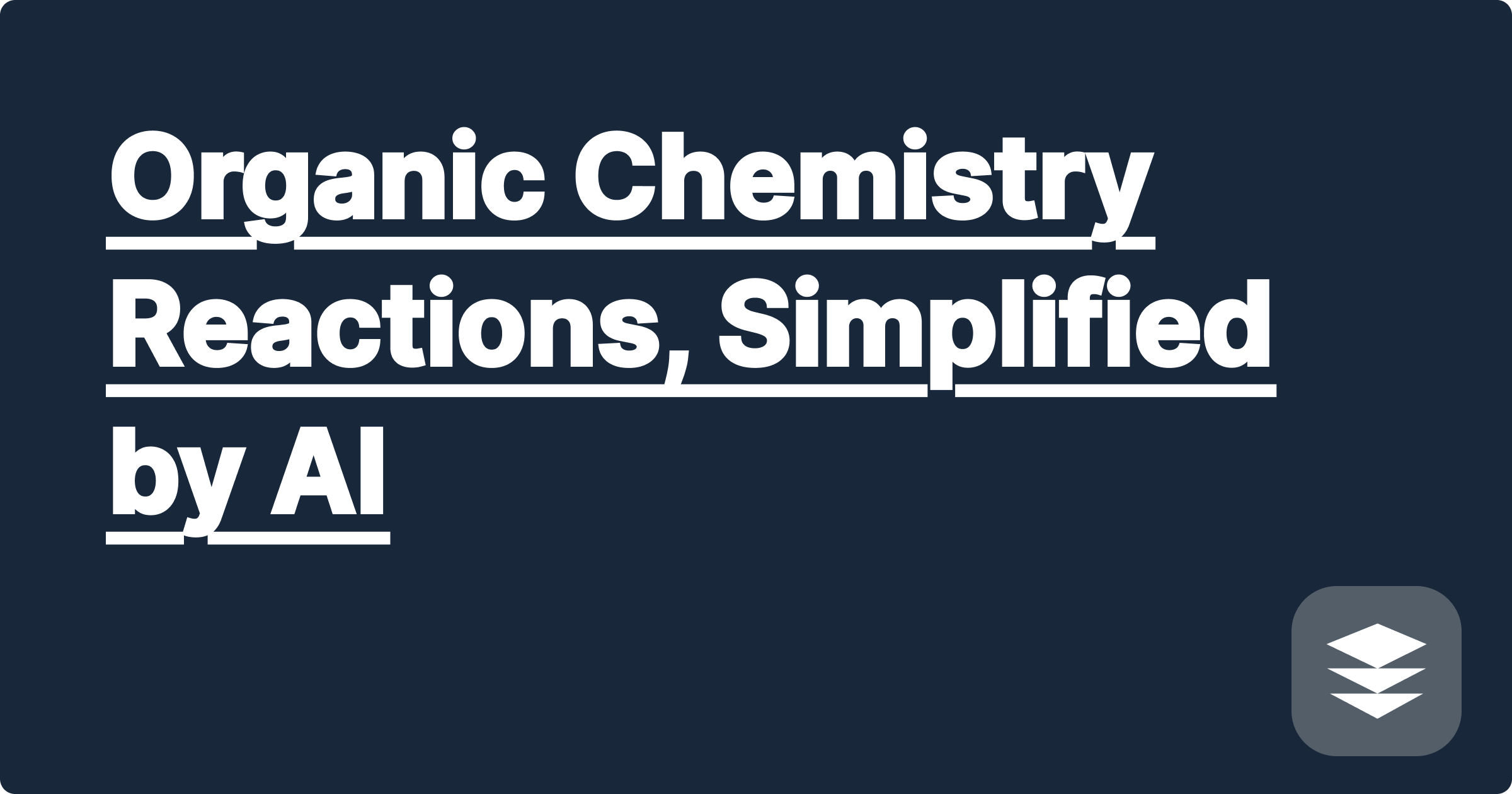
Welcome to Organic Chemistry, the course that has humbled countless pre-med and engineering students. It's a subject built on a language of its own: a dizzying world of functional groups, stereoisomers, and, most importantly, reaction mechanisms.
You're expected to memorize dozens of reactions—SN1, SN2, E1, E2, Aldol condensation—and predict their outcomes. But simple memorization isn't enough. To truly succeed, you need to visualize the flow of electrons, the movement of atoms, and the formation of intermediates. Staring at a static, 2D drawing in a textbook often isn't enough.
What if you had a tool that could act as your personal organic chemistry solver, bringing these complex reactions to life? Imagine an ai for ochem reactions that doesn't just give you the final product but visually breaks down the entire mechanism, step by step.
Organic chemistry is notoriously difficult because it requires a specific kind of spatial and abstract reasoning.
You need more than just text; you need a dynamic, visual way to see these reactions unfold.
A specialized AI tool like GPAI Solver is designed to translate the complex language of organic chemistry into clear, understandable steps. It acts as an interactive model kit and a tutor combined.
Here’s how you can use it to master a typical reaction mechanism:
Whether it's a "predict the product" question or a "propose a mechanism" problem, simply take a photo of it. You can upload an image from your textbook, a screenshot from a lecture slide, or a PDF of your homework assignment.
[Image: A student taking a photo of a complex organic chemistry reaction from their textbook with their phone. Alt-text: A user uploads a problem to an AI organic chemistry solver.]
This is the first critical step. GPAI Solver will analyze the reactants and reagents and identify the type of reaction you're dealing with (e.g., "This is a Grignard reaction," or "This looks like a Diels-Alder cycloaddition"). This immediate classification helps you anchor the problem to the concepts you've learned in class.
This is where the magic happens for visual learners. Instead of a single static image, GPAI Solver will break down the mechanism into a series of clear, sequential steps:
Each step is presented as a distinct visual, making the entire process easy to follow and remember.
"I could never visualize the 'electron pushing' my professor talked about. I started using GPAI Solver for my ochem reactions, and seeing the mechanism broken down into animated steps was a lightbulb moment. It completely changed how I studied."
Q1: Can the AI handle complex, multi-step synthesis problems?
A: Yes. For a synthesis problem (e.g., "How do you synthesize molecule Y from starting material X?"), a powerful organic chemistry solver can propose a multi-step reaction pathway, showing you the necessary reagents and intermediates for each stage of the synthesis.
Q2: What about stereochemistry? Can it show the 3D structure?
A: Advanced AI tools can represent stereochemistry using wedge and dash notation and can predict the stereochemical outcome of reactions (e.g., inversion of configuration in an SN2 reaction). While not a full 3D model, it provides the correct 2D representation needed for exams.
Q3: How is this better than just looking up the reaction on Google or YouTube?
A: Searching online can give you a generic example, but it might not match the specific reactants or conditions in your homework problem. An AI tool like GPAI Solver provides a solution tailored to the exact problem you upload, making it far more relevant and practical for your assignments.
Organic chemistry doesn't have to be a course you just "survive." When you can see and understand the logic behind the reactions, it becomes a fascinating puzzle. By leveraging an AI that simplifies and visualizes these complex mechanisms, you can move from rote memorization to true conceptual mastery.
Ready to finally conquer organic chemistry?
[Try GPAI Solver today. Upload your toughest reaction problem and see it simplified in clear, visual steps. Sign up now for 100 free credits.]
Cheatsheet Templates vs. AI-Generated: Which Is Better for Exams?
How to Organize a Semester's Worth of Notes with the AI Builder
The Perfect Study Aid for Visual Learners: AI-Powered Diagrams & Mind Maps
Last-Minute Cram Session? How AI Can Help You Pass Tomorrow's Exam
How to Tackle Your Calculus II Homework in Under an Hour
Organic Chemistry Reactions, Simplified by AI
How to Ace Your Coding Assignment with an AI Python Tutor
How to Write a Flawless Lab Report with AI-Powered Data Analysis
Master Linear Algebra: How to Visualize Difficult Concepts
Missed a Lecture? Here's How to Catch Up Instantly with AI